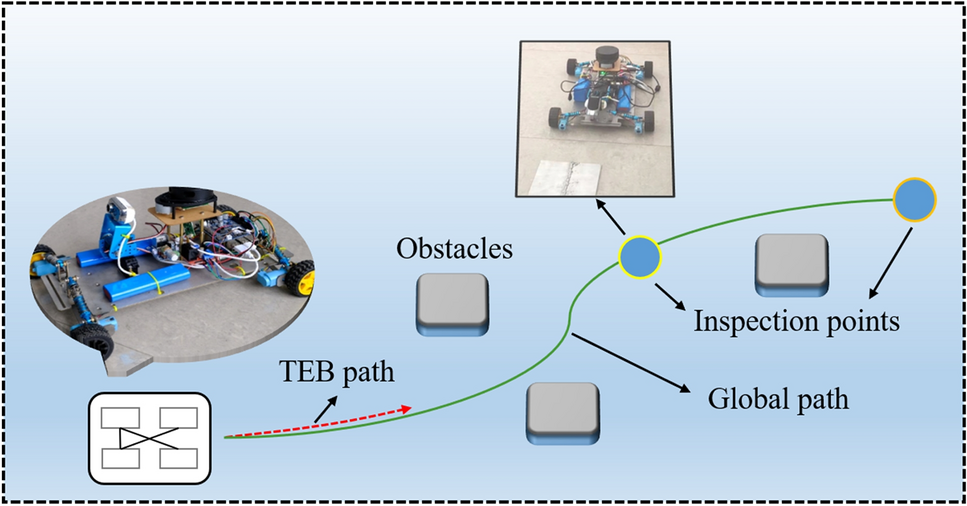Innovative Methods to Fillet Weld Evaluation and Screening: Enhancing Weld Quality and Conformity Criteria
In the world of welding, the quality and integrity of fillet welds play an essential role in ensuring the structural stability and dependability of different commercial parts. With the constant drive for improved efficiency and compliance with strict criteria, the expedition of ingenious strategies to fillet weld inspection and testing has actually come to be crucial. As sectors evolve, the conventional techniques might no more be enough in satisfying the needs of modern welding applications. By welcoming innovative technologies and approaches, a new perspective of opportunities arises in the world of weld quality assessment and adherence to conformity standards.
Advanced Non-Destructive Screening Methods
Making use of cutting edge modern technologies, advanced non-destructive screening methods play a crucial function in ensuring the stability and quality of fillet welds. These techniques, such as phased selection ultrasonic testing (PAUT) and magnetic fragment screening (MPT), offer in-depth insights into the weld's inner structure without triggering any kind of damage to the product. PAUT, as an example, makes use of several ultrasonic components to check the weld from various angles, giving an extensive visualization of possible problems like absence of fusion or fractures.
Similarly, MPT is reliable in discovering surface-breaking problems by using an electromagnetic field and iron bits to the weld area. This method is particularly helpful for identifying interruptions that might jeopardize the weld's strength. By employing these innovative non-destructive testing techniques, weld examiners can precisely assess the high quality of fillet welds, making certain compliance with market criteria and laws. The ability to detect imperfections early on not just boosts weld top quality yet additionally prevents pricey rework or failings in structural honesty, highlighting the relevance of these ingenious testing approaches in welding evaluations.
Robotics and Automation in Assessment
The assimilation of robotics and automation has actually changed the evaluation procedure for fillet welds, enhancing performance and precision in top quality evaluation. Robotics provide specific control and repeatability in examining welds, making sure trusted and consistent results. Automated systems can be configured to comply with details examination paths, making sure complete coverage of welds and decreasing the risk of human error.
Robotic evaluation systems outfitted with sophisticated sensing units can find and measure weld functions with high accuracy, offering thorough data for evaluation. These systems can determine issues such as cracks, absence of fusion, and porosity, making it possible for prompt restorative activities to be taken. Additionally, robotics and automation permit for real-time data collection and evaluation, offering instant feedback to drivers and assisting in quick decision-making procedures.
Furthermore, using robotics and automation in fillet weld inspection enhances overall efficiency by minimizing examination times and enhancing assessment throughput. By simplifying the evaluation process, suppliers can ensure weld high quality and conformity standards are met effectively, ultimately causing set you back financial savings and enhanced item top quality.
Utilizing Expert System for Evaluation
Fabricated knowledge plays a pivotal role in improving the performance and accuracy of analysis in fillet weld inspection processes. By harnessing the power of AI, examiners can improve the evaluation of weld high quality and conformity requirements, bring about much more reliable and specific results. AI algorithms can swiftly refine vast amounts of data from weld examinations, discovering issues or incongruities that may be testing to understand the naked eye. This advanced innovation allows real-time surveillance of weld quality, permitting for instant rehabilitative activities to be taken if any type of problems are identified. great post to read
In addition, AI systems can gain from past examination data, continually boosting their capability to identify possible flaws and inconsistencies in fillet welds. This adaptive understanding ability enhances the general quality assurance procedure, lowering the possibility of human error and making sure that welds meet the needed standards. By incorporating expert system into fillet weld evaluation, industries can accomplish higher degrees of effectiveness, consistency, and compliance in their evaluation practices.
Portable Devices for On-Site Examination
 Enhancing field examination effectiveness, the adoption of mobile devices changes on-site assessment look at this site processes for fillet welds. These devices use adaptability and convenience, enabling examiners to carry out thorough evaluations in various places, including difficult or remote settings. Mobile devices such as ultrasonic screening tools, magnetic fragment examination equipment, and digital radiography systems offer real-time information and high-resolution imaging capacities, enabling fast decision-making and instant comments on weld high quality.
Enhancing field examination effectiveness, the adoption of mobile devices changes on-site assessment look at this site processes for fillet welds. These devices use adaptability and convenience, enabling examiners to carry out thorough evaluations in various places, including difficult or remote settings. Mobile devices such as ultrasonic screening tools, magnetic fragment examination equipment, and digital radiography systems offer real-time information and high-resolution imaging capacities, enabling fast decision-making and instant comments on weld high quality.One significant advantage of mobile tools is their capacity to simplify evaluation treatments, lowering downtime and boosting overall efficiency. Inspectors can quickly deliver these tools to various task sites, eliminating the need for carrying hefty equipment or elements to off-site facilities. Furthermore, the mobility of these devices advertises cost-effectiveness by reducing transportation costs and accelerating examination timelines.
Additionally, using check my site mobile devices for on-site inspection promotes positive quality assurance measures, as inspectors can immediately determine and resolve any kind of potential welding flaws or disparities. By including these cutting-edge modern technologies right into on-site examination practices, welding experts can make certain compliance with industry standards and improve weld top quality, inevitably resulting in improved architectural honesty and safety in various welding applications.
Integration of Information Monitoring Systems
Having actually maximized on-site evaluation procedures via the use of mobile devices, the following stage includes the seamless integration of data management systems to better enhance effectiveness and data analysis capacities in fillet weld examination and screening. Welding Inspection Racine. By integrating data management systems right into the assessment process, organizations can enhance data collection, storage space, and evaluation. This combination allows for real-time monitoring of weld top quality, prompt identification of issues, and prompt decision-making to remedy any issues that may occur throughout the examination process
The assimilation of data management systems allows seamless interaction between various stakeholders involved in the examination process, cultivating partnership and enhancing general quality control actions. Ultimately, the assimilation of data monitoring systems serves to boost the requirements of fillet weld inspection and screening, making sure compliance with market regulations and boosting weld high quality.
Final Thought
In conclusion, ingenious approaches to fillet weld inspection and screening have actually substantially enhanced weld quality and compliance requirements. Advanced non-destructive screening methods, robotics, automation, man-made intelligence, portable devices, and data administration systems have actually revolutionized the method weld inspections are carried out. By making use of these innovations, sectors can guarantee that welds fulfill the required quality criteria and regulations, eventually enhancing total efficiency and safety and security in welding procedures.

By using these innovative non-destructive testing methods, weld examiners can precisely assess the quality of fillet welds, making sure conformity with industry requirements and guidelines. Mobile devices such as ultrasonic screening tools, magnetic particle assessment tools, and digital radiography systems give real-time data and high-resolution imaging abilities, allowing quick decision-making and instant responses on weld quality.
Having actually enhanced on-site assessment procedures through the usage of mobile devices, the next stage entails the seamless integration of information management systems to better improve effectiveness and data analysis capacities in fillet weld assessment and screening (Welding Inspection Racine). Eventually, the assimilation of information administration systems offers to boost the standards of fillet weld assessment and testing, guaranteeing compliance with market regulations and enhancing weld quality
 In verdict, innovative strategies to fillet weld inspection and testing have actually dramatically enhanced weld high quality and compliance standards.
In verdict, innovative strategies to fillet weld inspection and testing have actually dramatically enhanced weld high quality and compliance standards.